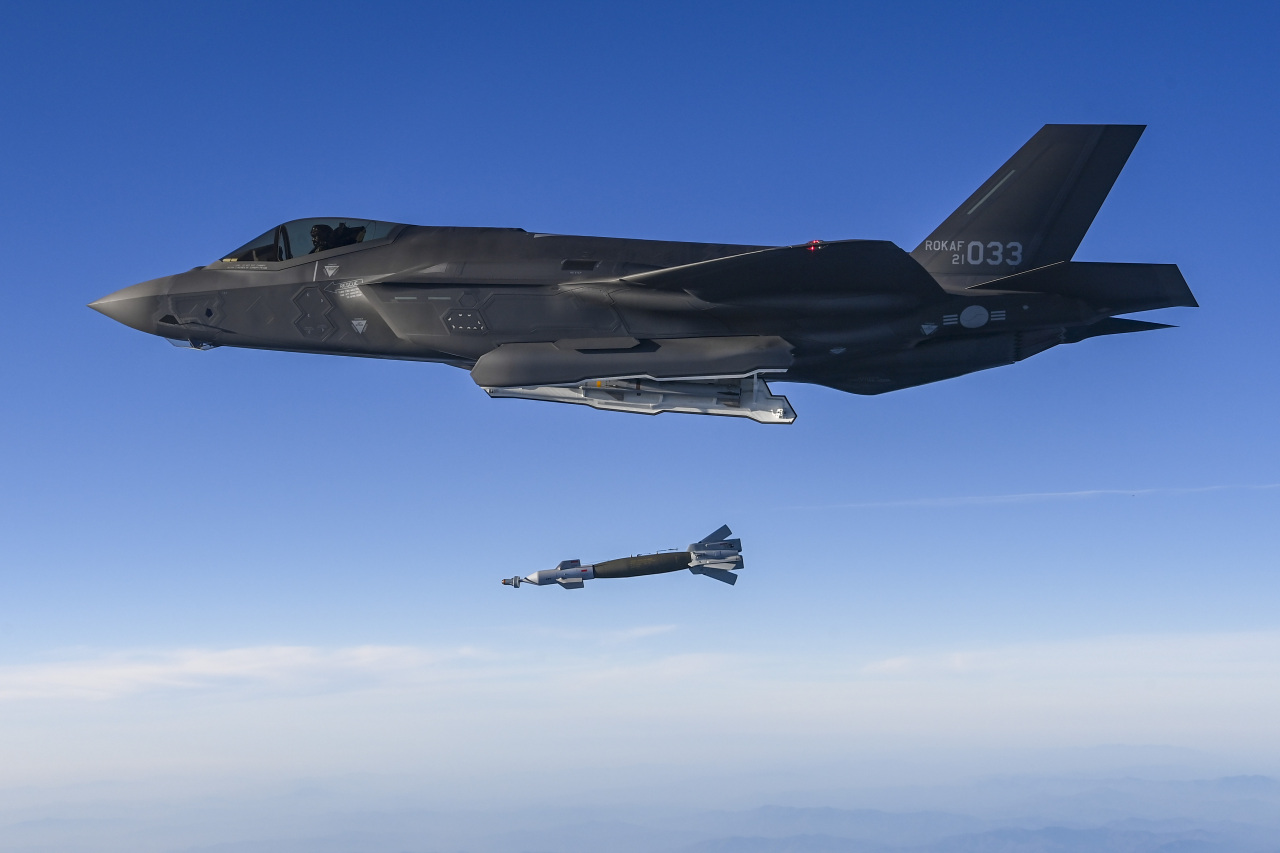S. Korea fires bombs at mock N. Korean missile launcher in response to ICBM launch
By Ji Da-gyumPublished : Nov. 18, 2022 - 18:59

The live-fire drills were staged at Pilsung Range in Kangwon Province in the afternoon, about six hours after the North Korean missile was launched to waters off Japan at 10:15 a.m., according to the Joint Chiefs of Staff.
The drills aimed to “demonstrate the ability of (South Korea’s) F-35 fighter jets with advanced stealth capabilities, to stealthily approach a target without being detected by the enemy and precisely strike the target,” the JCS said.
The South Korean Air Force’s four F-35A stealth fighters also flew with four F-16 Fighting Falcons of the US Air Force in a combined strike group over the East Sea.
The allies’ military actions came after South Korean President Yoon Suk-yeol instructed officials to strengthen the South Korea-US combined defense posture.
The missile, reportedly to be a new Hwasong-17 ICBM, traveled about 1,000 kilometers, reaching a top speed of Mach 22 and an altitude of around 6,100 kilometers. Japan said the ICBM would have a range exceeding 15,000 kilometers if fired at a regular trajectory, far enough to reach the US mainland.







![[KH Explains] How should Korea adjust its trade defenses against Chinese EVs?](http://res.heraldm.com/phpwas/restmb_idxmake.php?idx=644&simg=/content/image/2024/04/15/20240415050562_0.jpg&u=20240415144419)











![[Today’s K-pop] Stray Kids to return soon: report](http://res.heraldm.com/phpwas/restmb_idxmake.php?idx=642&simg=/content/image/2024/04/16/20240416050713_0.jpg&u=)